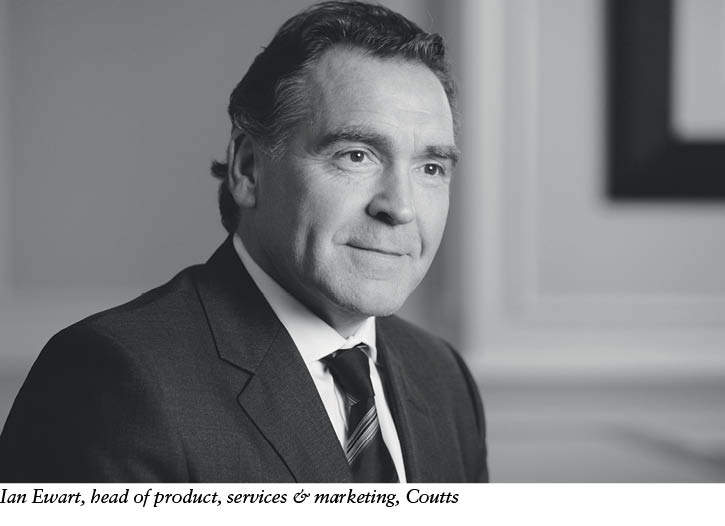
The digitalisation of client interaction is constantly evolving as banks seek to provide the right type of information through the right channels to their clients at the right time. Alison Ebbage talks to banks and vendors about some of the latest digital trends and where social media fits.
Moving with the times is no longer optional when it comes to private banking systems and software.
For years the industry has talked about the need to move on from patchwork legacy systems that make life so hard for the adviser. But with a wealth transfer tsunami expected, its tech-savvy recipients will demand – as standard – an enhanced service proposition over a range of digital channels.
A Capco report, Digital Services In Wealth Management, published in September 2012, summed up the issue. It said that with a wave of generational wealth transference, wealth managers need to be able to deliver a digital relationship with full functionality that exceeds the expectations of the time-poor, demand-rich clients of the future.
"If unhappy, they can and will walk. The wealth transfer process itself will compound this pressure. Even the longest, ‘stickiest’ relationships with trusted family wealth managers will not escape appraisal and potential termination," says the report.
In addition, customers have been demanding more active communication and risk management in the wake of several years of financial market instability. They want varied and instant touch points and the ability to see how their assets are performing at a time, and over a channel, of their choosing.
Private banks then need to give serious thought about how they will deliver services in future years to clients with very different expectations from their grandparents.
Real time, real fast
Core to this are the systems and platforms held at the bank itself. They need to be capable of reducing the time spent capturing data in the first place and then offer real agility in terms of feeding mobile applications with real-time data when it comes to investments and performance.
Coutts, which completed its global installation of the Avaloq system with the UK earlier this year, is a good example. It replaced 15 or so other core systems, according to Ian Ewart, head of products at the bank.
"Effectively it has all been about technology making real-time data available to all. This ‘enables’ the relationship at a point or channel that is convenient for the end client," he says.
"The new system allows us to capture key information just once and integrate it in one place. This means everyone – be that the client, the adviser or those working behind the scenes in a strategic or compliance role – sees the same information.
This drives forward a more dynamic relationship and enables a more accurate and targeted provision of suitable solutions and thus a more productive relationship," he says.
SunGard is also in on the action with the launch of the Ambit Wealth Management system in Asia. Essentially this is a new front-to-back wealth management solution suite with mobile banking functionality.
For the client, systems allowing a single, accurate and up-to-date view of their affairs that allow for better levels of self service, readily accessible reporting and a system that is all over more customisable. Advisers gain too from time efficiencies in that client data is not inputted more than once, and performance data is always up to date and customised around a client’s risk profile.
Strategically having more reliable and up-to-date client data means the banks gain the ability to better target clients with possible solutions as well an analytical capability that is robust.
At your fingertips
But however good that data, for clients the expectation is access to that data as regards their investments and being able to ‘play’ with it over a channel of their choosing and in real time.
Joe Norburn, global head of client and front office solutions at Coutts, explains: "Access to both information and the adviser over a variety of channels gives the client choice – but crucially each point of access should have the same options functionality-wise.
It comes full circle in having the decent core system to enable that and to unlock the opportunities that lie in the digital space."
In practice this goes far beyond the ability to transact. With the rapid adoption and growth projections for tablets and smartphones, the use of mobile devices will clearly play an increasing role in financial services.
Accordingly clients will increasingly demand the ability to log on via tablet or mobile, have real time video conferences and access advice via an easy-to-use and up to date dashboard that can pull up relevant data instantly. Digital signatures also need to be on offer.
A new report by Celent, Ranking Wealth Management Platform Vendors: 2012, identified the need to have a fully supported digital strategy that should be end to end and fully integrated with other systems.
"Wealth managers will require technology and functionality support to integrate these disparate digital channels and provide a streamlined user experience plus functionality to track and measure sales across the digital medium," it says.
Marc Bühler, product manager at Avaloq Front Suite, says there is almost universal interest in digital channels and mobile apps to enhance the client experience.
"The tablet can significantly add to the advisory relationship by providing concrete and meaningful interactions between client and adviser," he says.
Accordingly, next January the firm is to launch a new financial planning application for tablets. It will allow for simulations, ‘what if’ scenarios, risk profiling and other services to be done face to face but with much better-quality graphics.
"The next thing will be interaction that allows the client to request a call back, or face time and issue calendar meetings with the adviser," says Bühler.
Sungard too has launched several mobile applications for use in client meetings. The firm has sought to provide actionable data, as opposed to a static replication of data held centrally.
WealthStation Mobile Meeting, launched in 2011, is customisable and able to provide, for example, current plan data and ‘what if’ analysis.
It covers a review of the relationship and the client’s circumstances, a review of current holdings and a future scenario capability. The application pulls its data from Sungard’s core Wealthstation servers, thus maintaining the single holding of data, although data from other sources – such as assets held with other financial institutions – can also be displayed.
The company furthered its mobile offering in June this year by making financial planning reports available and thus reducing the need for paper-based reporting. Again the data is stored centrally and this mitigates security concerns.
But are there limits to the amount that can be achieved via mobile channels? The Celent report found that it is unlikely that advisers will create a full and integrated financial plan through mobile channels but that advisers would "conduct basic and collaborative financial scenarios and plans, present interactive reports, take notes, and peruse product catalogues."
The report also said that more proactive advisers would use tablets for client onboarding and form generation. Security is also a concern with reputation being everything within the industry.
Social media: a sticking point?
How social media will fit into mobile wealth management applications is unclear. Public sharing of private information is a somewhat incongruous concept, but some value can be clearly created by tapping into the ‘community’ aspect of social media and allowing like-minded individuals to collaborate and communicate.
And for banks, social media can be used to track people’s interests, careers and locations, and act as a channel for a bank to advertise something it is doing or an event it is holding.
But the issue with social media is over where the boundaries should lie when it comes to the sharing of information. At what point does privacy and security outweigh the value that can be derived (for both bank and client) from creating private communities to access shared data and information for mutual benefit?
Alessandro Tonchia, director at Finantix, comments: "The held idea is that social media can be a good marketing tool and way of capturing and monitoring information but that once a prospect becomes a client that there is a clear need to get them on to a closed and secure network."
Martin Engdal, director of business development and product marketing at Advent notes: "One big demand is the use, by clients, of their own community of contacts to share information, perhaps even comparing and contrasting performance data and creating their own community benchmarks."
But hosting that data on a public site such as LinkedIn is problematic, and so building a private network that can be integrated with the private bank’s own system and extended to select clients is preferable.
Citi, for example, has a knowledge-exchange platform with a number of different access points so that like-minded individuals can talk to both advisers and each other in a safe environment.
In a closed network like this, the information flow can be closely controlled and security issues with public networks can be neatly avoided. Citi also has a secure private social media platform built exclusively for its next-generation clients to interact, network and stay connected.
According to the bank, it allows them to freely, and most importantly, safely engage with each other on an ongoing basis, enabling them to build personal and professional relationships.
Members build contacts and share content from anywhere in the world and on a variety of subjects such as entrepreneurial pursuits, succession planning, investments, art, philanthropy and next generation alumni events.
Channel advisers agree, however, that the technology can only ever be the enabler of the relationship; it can never replace the human interaction and the quality of the actual advice and service provision itself.
Norburn comments: "Clearly the technology helps the bank as well as the client to solve complex issues and free up time provide a one-to-one service that is tailored to the needs of each client.
"Technology can only ever enable this by allowing clients to choose their point of access and giving them the same functionality over each. That in turn enhances the service proposition."







